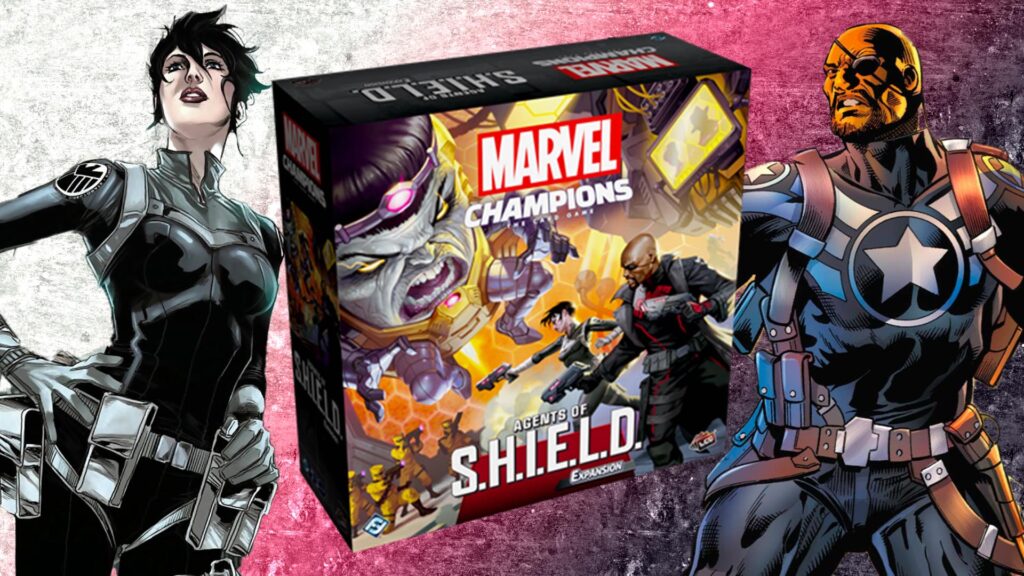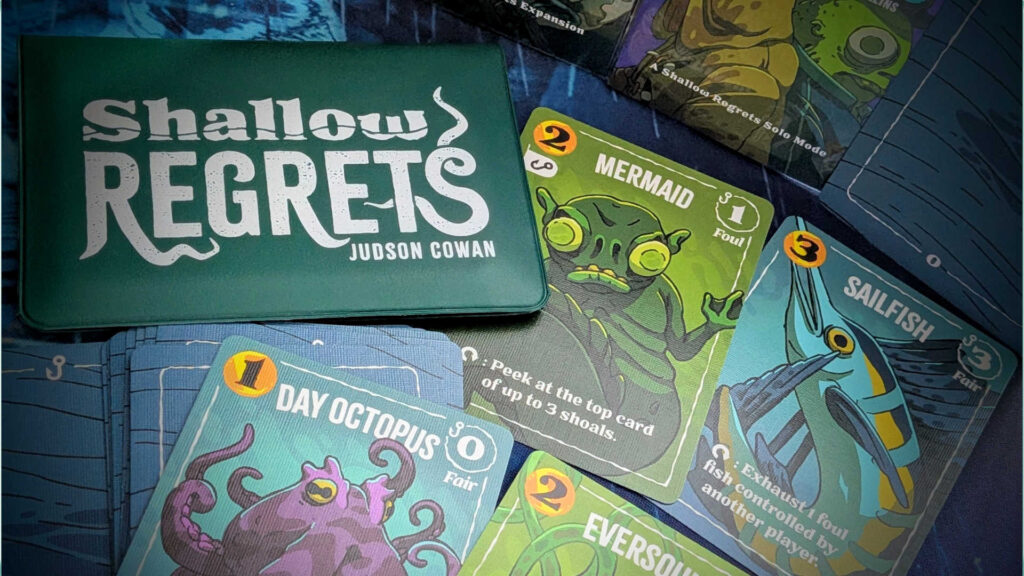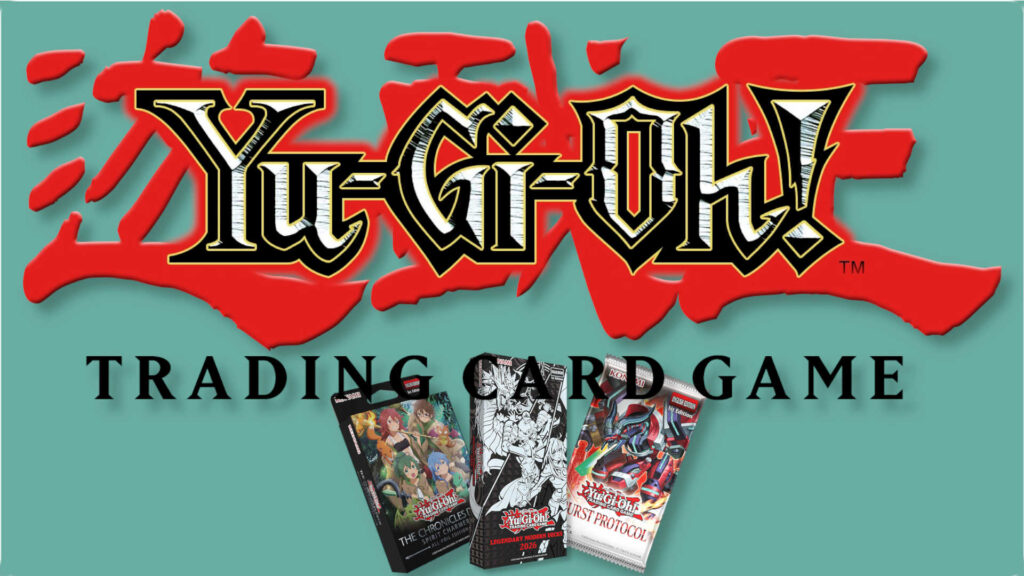Images courtesy of Fantasy Flight Games/Marvel
Marvel Champions has released the Agents of S.H.I.E.L.D. expansion, and the excitement for the heroes and scenarios within have been high amongst the community.
Every expansion box is headlined by two heroes that kick off the wave and set the tone for what we should expect from the remaining hero packs. And our newest heroes, Maria Hill and Nick Fury, are no different.
This week we’ll look at these two heroes and analyze the gameplay of each, along with their strengths and weaknesses. These evaluations go beyond my perspectives when I unboxed the expansion. The Mutant Era is over; let’s see how this new era stacks up.
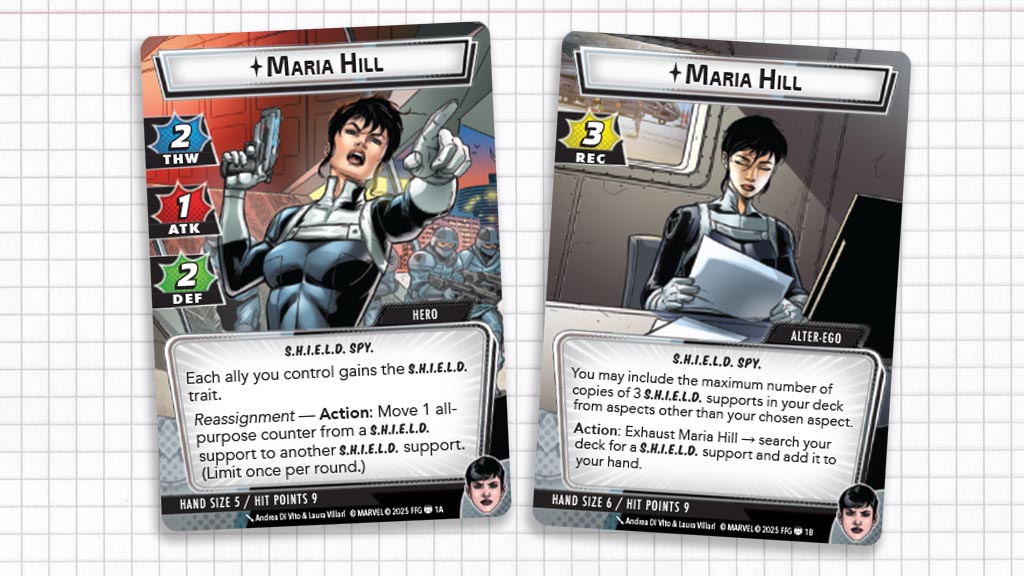
Table of Contents
ToggleMaria Hill
Maria Hill is a hero that cares primarily about supports that come with all-purpose counters on them. Uniquely, her kit doesn’t come with any cards that carry the attack or thwart traits. Her alter-ego allows you to search your deck for S.H.I.E.L.D. support and her hero form allows you to move these all-purpose counters between different S.H.I.E.L.D. support cards, even those under other players’ control.
When Maria was previewed, I was vocally uninspired. This wasn’t because I thought that she was a bad hero, with bad cards, and a bad gimmick. More so, it was that the best strategy was a handful of asset management that needed to be done across multiple turns of the scenario. And having now played with the character, I will say that that intuition was correct.
In a similar way to Ironheart, the early turns with Maria Hill are about building your board presence – ultimately, playing out the large supports that thrive under her command. The remaining rounds focus on the two or three supports that matter most for your win condition. Each turn, put out other supports that have counters on them, which can be moved to the supports you’re prioritizing.
This is very powerful and consistent, verging on not being fun. This is extremely subjective; being powerful is fun for a lot of players. And in true solo, she should be able to handle herself very well. My real concern is in multiplayer, where she may trivialize your fellow players.
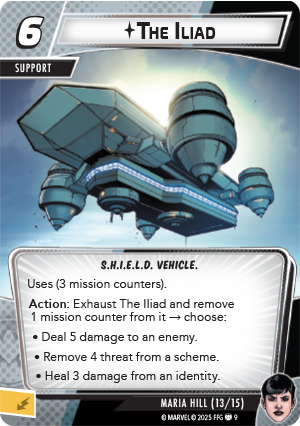
Best Card: The Iliad
Support –
Uses (3 mission counters).
Action: Exhaust The Iliad and remove 1 mission counter from it → choose:
• Deal 5 damage to an enemy.
• Remove 4 threat from a scheme.
• Heal 3 damage from an identity.
The six-cost supports that Maria utilizes in her preconstructed deck are all very powerful. Reigning above all of them, The Iliad is far and away the most universally applicable to any scenario of Marvel Champions. Thank Odin, this is an identity-specific card, because every scenario this was played in revolved around how effective The Iliad could be at disarming threats; be they side schemes, near-lethal damage, or sizable minions.
In the hands of a different hero, The Iliad would be a good card. But Maria draws out its maximum potential. It’s powerful and fun in all the right ways. It absolutely trivialized several threats, but the power fantasy was so real.
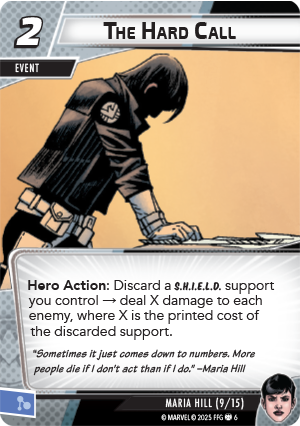
Weakest Card: The Hard Call
Event –
Discard a S.H.I.E.L.D. support you control → deal X damage to each enemy, where X is the printed cost of the discarded support.
The baseline of power is very high amongst Maria’s cards. It should say something that the weakest card in her kit may be the two-cost event that can easily deliver six damage on the regular. The issue with The Hard Call is that its best use is when you’re looking to end the game. This is an uncommon predicament, where the opportunity cost of a card is in direct opposition to the core gameplay of the hero. You can absolutely get a lot of use out of this card, but it’s too situational to rank highly amongst her cards.
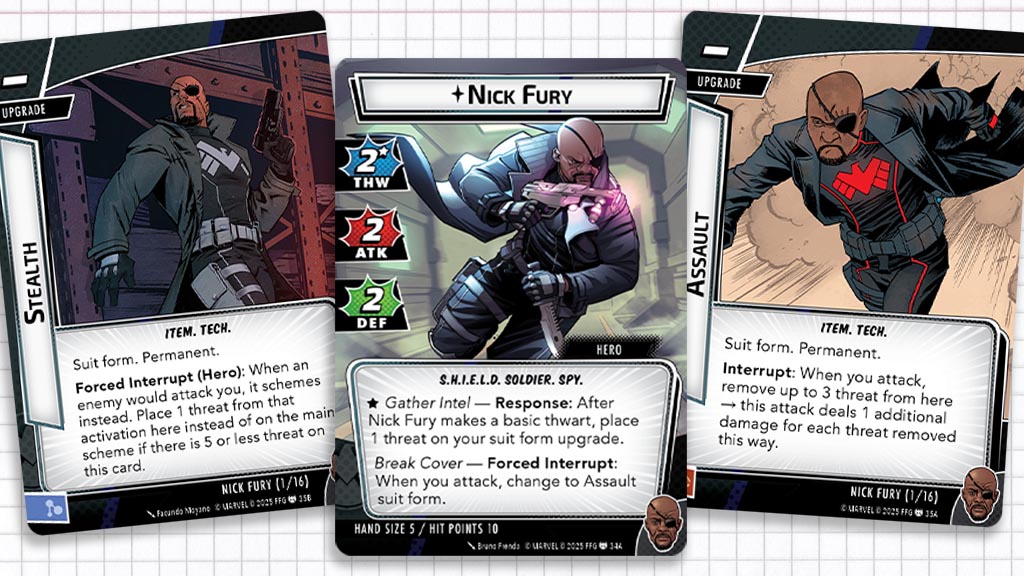
Nick Fury
While the games that I’ve played with Nick Fury thus far have not been successful, I have had ton of fun trying to figure out the best way to use him straight out of the box. Playing the baseline Nick Fury reminds me a lot of my days playing lunch table Magic against much better players. When I would lose I couldn’t understand what caused it, because my opponent was making a series of correct decisions. Nick Fury is a series of correct decisions.
Starting in play at the beginning of each scenario, the double sided suit form upgrade dictates the flow of the villain phase. On the Stealth side, enemies who would attack will scheme instead. And, if the suit is carrying five or fewer threat on it, will absorb one of the schemed threat. On the Assault side, which you change into by attacking, this threat can be taken off to amplify your attacks.
From there it’s a lot of cloak and dagger decision making that’s easy to understand but difficult to master. Additionally, Fury brings back the Preparations that we saw with Black Widow during the first year of Marvel Champions, playing with the trait in a fun way that amplifies what we already had.
From an objective power level perspective, Nick is probably the weaker of the two heroes. But for those players that enjoy concocting precision plans, he may prove to be the more fun hero. Conversely, I don’t see him being a multiplayer hero that diminishes what other players are trying to do, instead shaving off difficulty to allow more time for the rest of the table to do their thing.
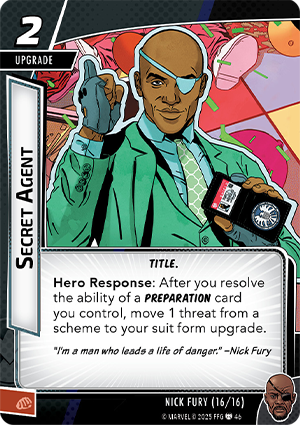
Best Card: Secret Agent
Upgrade –
Hero Response: After you resolve the ability of a Preparation card you control, move 1 threat from a scheme to your suit form upgrade.
I’m not someone who’s able to assess the power level of cards that don’t have a past analog. As such, I underestimated just how powerful Secret Agent is. If you’re looking to leverage Preparation cards as the core strategy of your deck, this card doesn’t exhaust and will absolutely do work for you. In combination with the new card Practice Plan, it’s assured that you’ll be diverting multiple threat tokens every turn.
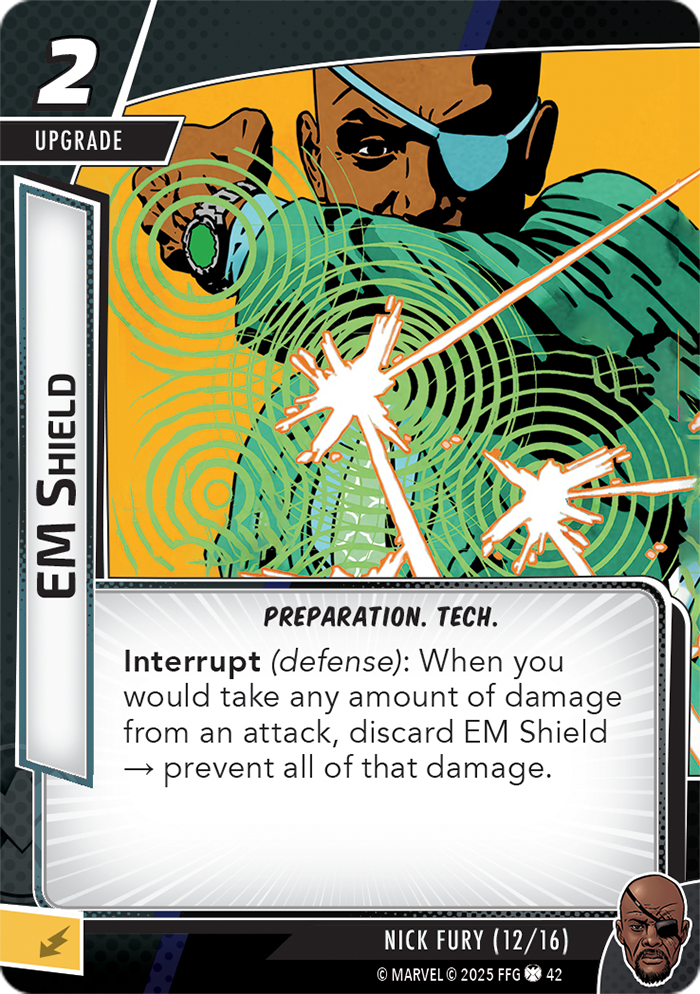
Weakest Card: EM Shield
Upgrade –
Interrupt (defense): When you would take any amount of damage from an attack, discard EM Shield → prevent all of that damage.
In a similar vein to Maria Hill, Nick Fury’s cards are all well balanced in terms of power level. This brings evaluation down to the opportunity cost of each card, making EM Shield the weakest card in his kit. Due to how easily Nick can mitigate attacks, you’re better off living in stealth suit form and simply not being attacked. Even with the Preparation synergy, this is a card you can often live without.
We have an embarrassment of riches when it comes to characters that we can play in Marvel Champions, so any misgivings for Maria Hill or exaggerations of Nick Fury are tempered by the knowledge that there will always be more content to investigate.
The excitement for what comes next in Marvel Champions is palpable. We already know that we’re getting hero packs for Black Panther, Silk, and Falcon, each of them bringing new strategies and amplify existing ones. They’ll make their presence known and highlight forgotten heroes that haven’t seen play recently.
As always, you can find me every week over on YouTube continuing my List Series, premiering New Player Guides, and playing games. Or check out more of my written content here on Card Gamer, like my piece on competitive balance. Or you can learn the basics of the game here.
Until next time, thanks for reading.

